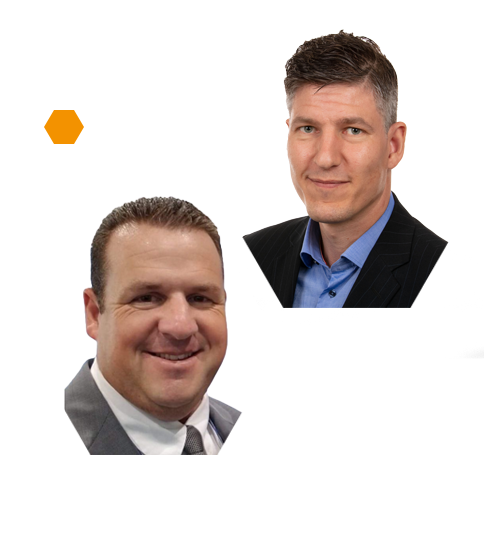Connecting continents
Brian Geiger & Chris van Oene - Director of Supply Chain USA & Director of Quality Assurance USA

We get a lot done from our offices in the Netherlands (Almelo and Woensdrecht) and Romania (Sibiu). As an internationally operating business, our activities span the globe. And luckily, we live in a day and age when global interconnectivity has made the world smaller. However, there is and always will be a need for a physical presence. Being in the right place, at the right time. That’s where Brian and Chris come in when it comes to Aeronamic’s business in the US.
“We both had different histories before landing our jobs in the US.” Chris is Dutch and has been with Aeronamic for over 9 years now. He began as a quality development engineer, but about 2 years ago, he moved from the Netherlands to Phoenix (Arizona) and became Director of Quality Assurance USA. Brian is American and has been working for Aeronamic in the US for 11 years. From the very beginning, he was responsible for Aeronamic’s procurement and logistics in that country. “As a two-man team, we are an extension of our headquarters. This means more than just being the eyes and ears of Aeronamic in the US.”
From close to closer
“The aerospace business is a small, close-knit community. The same people have been working within aerospace for years. This means that people we work with through Aeronamic are also the same people we have been working with throughout our careers.” Chris moving to Phoenix to work side-by-side with Brian was an important step in order to improve on what was already successful. “Our close relations with our suppliers and customers are based on maintaining high quality communication throughout the whole supply chain and product delivery process. We felt we could strengthen and improve our service by being present in person. We need to be there at every point in the chain, from managing parts and systems to delivering them to our customers.”

Bridging time zones and cultures
Dutch people can be quite direct. In fact, that’s an understatement. This is neither a good nor a bad thing in itself, but that approach doesn’t always work in the US. There is the risk of people talking past each other. “Being present in the US ourselves creates a much better understanding and a more realistic view of what is actually happening. We can determine more quickly what our suppliers and customers really need. You can visualize it as us having a link between us and our supplier or customer, having another link to our headquarters in the Netherlands or our facility in Romania. These links make it possible to continuously communicate with each other. This is where the time difference between the US and Europe comes into play. As Aeronamic’s US team, we are in direct contact with suppliers and customers who are in the same time zone as us. We can work together in real-time. This is important, since we are working with forecasts and have to avoid gaps in the supply chain at all times. If issues arise or other actions are required, we can offer assistance with ease and convenience, through email, phone, video calls or by visiting in person.” Although our European locations are in a different time zone, our fellow parties in the US don’t experience any waiting times or delays. “We provide a closed loop of continuous effort when it comes to supply chains, customer service and quality engineering services. In conclusion, you could say that real-time thinking becomes real-time action, without any ‘continental delays’. This continual link approach has proven hugely successful.”
Tag-team teamwork
“To work seamlessly together and deliver the best quality, we as a team must always be on the same page.” Brian takes on the supply chain part; Chris takes on the quality assurance part. “Together, we use our various disciplines to support each other in meeting and exceeding expectations.” Brian has an extensive background in Supply Chain and Logistics. Chris’ background is in Chemical Engineering and Business Administration. “We complement each other extremely well. We know how to utilize each other’s skill sets, because we have a good relationship in which we feel there are opportunities for both of us. We combine our knowledge and can therefore deliver the highest levels of service, a continuous flow, and therebyensure continuity.” In the final analysis, connecting continents begins by connecting your inner-company skills.
When it comes to connecting continents even better, what more should we be reaching for?